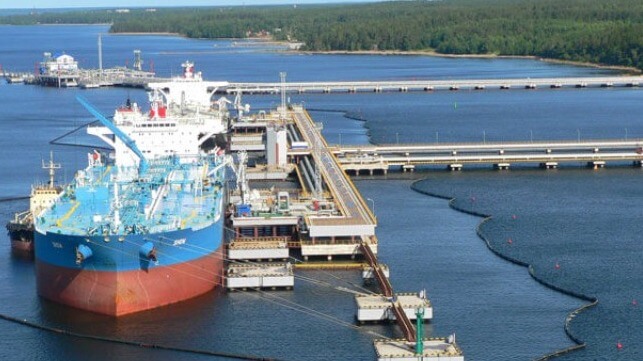Study: Tankers are Carrying Russian Oil Priced Far Above G-7 Cap

In a new preprint paper, a group of academic researchers at Columbia, UCLA and the KSE Institute have determined that Russia's average seaborne oil export price is still well above the $60 per barrel G-7 price cap. Since many of these barrels travel aboard ships covered by the G-7 sanctions measure, this suggests a need for strengthened enforcement - and perhaps the need to slash the cap price to a much lower level.
In September, the G-7 nations reached a landmark decision to attempt to put a price cap on seagoing shipments of Russian oil, hoping to restrict the amount of money flowing to Moscow without an outright ban on its crude. The price cap was intended as a compromise solution, allowing Russian oil to flow while reducing available funding for the ongoing invasion of Ukraine. The mechanism works by limiting G-7 / EU-based maritime "service providers" - shipowners, charterers, insurers, brokers and others - to serving only cargoes priced below $60 per barrel. (Companies located in China, India, Russia and elsewhere are not covered and may facilitate Russian oil shipping without restrictions.)
The cap took effect December 5, and early estimates suggested that it was cutting into Russian export earnings. In January, analysts at Finland's Centre for Research on Energy and Clean Air (CREA) estimated that the falling price for Russian crude oil was costing the Kremlin more than $195 million a day.
However, a new study led by Tania Babina of Columbia Business School determined that there is room for improvement. Russia recorded record-high goods exports ($530 billion) and a record trade surplus ($280 billion) despite Western sanctions in 2022, led by lucrative petroleum sales in an overheated oil and gas market. Even after the imposition of the price cap, the average price per barrel for Russian oil exports stands at about $74. At Russia's Pacific Coast ports, the price per barrel in the post-embargo period has averaged about $82, comparable to Brent.
Since these extra dollars underpin the Russian federal budget and Russian military spending, this poses a challenge for G-7 and EU policymakers. The solution, according to Babina's team, is to double down on enforcement. The Russian-controlled fleet and the "dark" fleet of fly-by-night tankers can only carry about 50 percent of the export total, so Russia has to source tonnage for the other 50 percent from foreign shipowners - many of whom are subject to the price cap, the researchers noted.
The team called for heightened enforcement of existing sanctions measures, starting with audits of the attestations of compliance held by shipping service providers. Shipowners and insurers, who are not privy to pricing data themselves, rely on attestations from the cargo owner to determine whether the oil's sale price is compliant. They have to hold on to these documents in case they are audited. "Regular audits are not only critical to determine compliance with EU/G7 policies, but also to understand market dynamics and Russian attempts to circumvent sanctions," the researchers wrote.
Ultimately, the price cap might not affect the course of the war, according to Dr. Tatiana Mitrova, a fellow at Columbia's Center on Global Energy Policy - but it could affect Russia's future.
"Even if oil revenues decline drastically, the National Wealth Fund is big enough to finance Russia’s war for another year or eighteen months. What the decline certainly will impact is Russia’s development and long-term investment in new projects, both fossil fuels and green technology," Mitrova wrote in a recent essay for the Carnegie Endowment. "In a decade, the energy superpower status Russia had claimed will be firmly in the past."
